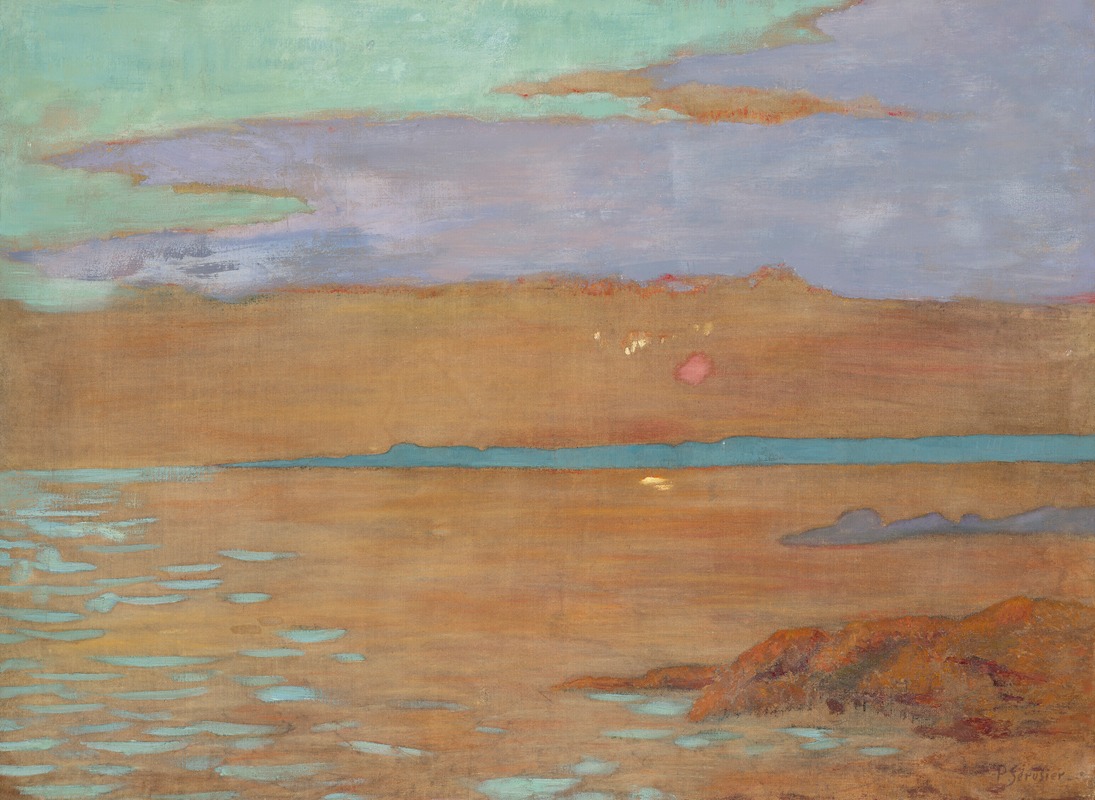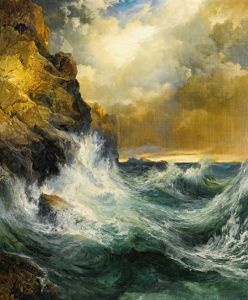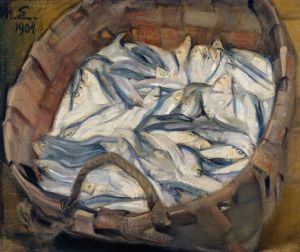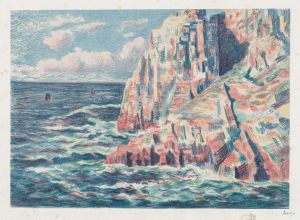
Marine
A hand-painted replica of Paul Sérusier’s masterpiece Marine, meticulously crafted by professional artists to capture the true essence of the original. Each piece is created with museum-quality canvas and rare mineral pigments, carefully painted by experienced artists with delicate brushstrokes and rich, layered colors to perfectly recreate the texture of the original artwork. Unlike machine-printed reproductions, this hand-painted version brings the painting to life, infused with the artist’s emotions and skill in every stroke. Whether for personal collection or home decoration, it instantly elevates the artistic atmosphere of any space.
Paul Sérusier's painting "Marine" is a notable work by the French Post-Impressionist artist, who was a key figure in the development of the Nabi movement. Sérusier, born in 1864, was deeply influenced by Paul Gauguin and the Symbolist movement, which is reflected in his approach to color and composition.
"Marine" is an exemplary piece that showcases Sérusier's exploration of color theory and abstraction, which were central to the Nabi philosophy. The Nabis, a group of avant-garde artists in the late 19th century, sought to break away from the naturalism of Impressionism and instead emphasized the importance of the artist's subjective experience and the symbolic use of color.
In "Marine," Sérusier employs a bold palette and simplified forms to convey the essence of the seascape rather than a detailed representation. This approach aligns with the teachings of Gauguin, who encouraged artists to use color as a means of expression rather than mere depiction. Sérusier's use of flat planes of color and rhythmic patterns in "Marine" creates a sense of harmony and balance, inviting viewers to engage with the emotional and spiritual dimensions of the scene.
The painting reflects Sérusier's interest in the spiritual and mystical aspects of art, a theme that was prevalent among the Nabis. They believed that art should transcend the visible world and evoke deeper meanings and emotions. In "Marine," the sea is not just a physical entity but a symbol of the infinite and the eternal, resonating with the viewer on a metaphysical level.
Sérusier's work, including "Marine," played a significant role in the transition from Impressionism to more abstract forms of art in the 20th century. His innovative use of color and form influenced subsequent generations of artists, contributing to the development of modern art movements such as Fauvism and Abstract Expressionism.
"Marine" is also an example of Sérusier's dedication to the principles of Synthetism, a style characterized by the synthesis of form and color to express ideas. This approach is evident in the way Sérusier simplifies the elements of the seascape, focusing on the interplay of colors and shapes to convey a sense of tranquility and introspection.
The painting is housed in a collection that appreciates Sérusier's contribution to the art world, highlighting his role as a pioneer in the use of color as a means of personal and spiritual expression. "Marine" continues to be studied and admired for its innovative approach and its place within the broader context of art history.
Overall, "Marine" by Paul Sérusier is a testament to the artist's visionary approach and his commitment to exploring new artistic frontiers. Through his use of color and abstraction, Sérusier invites viewers to experience the world beyond its physical appearance, engaging with the deeper, more profound aspects of human perception and emotion.


















